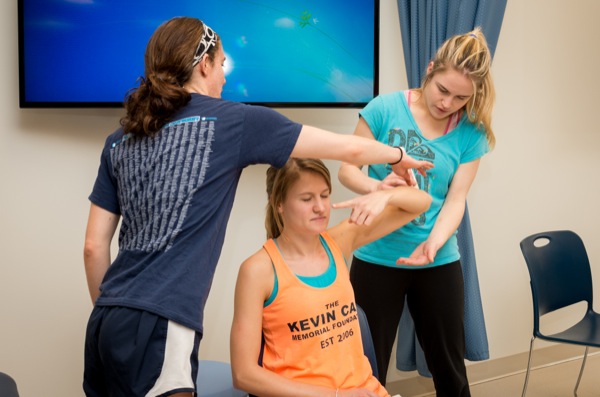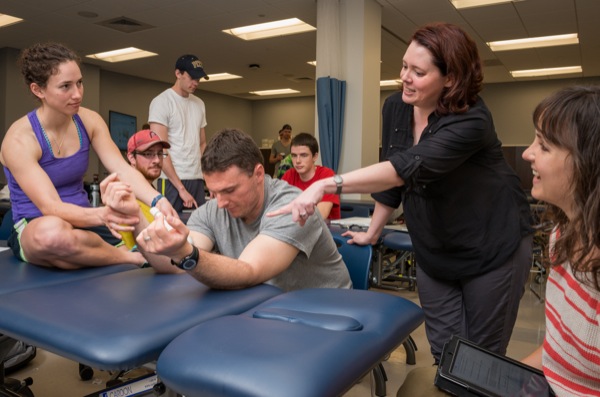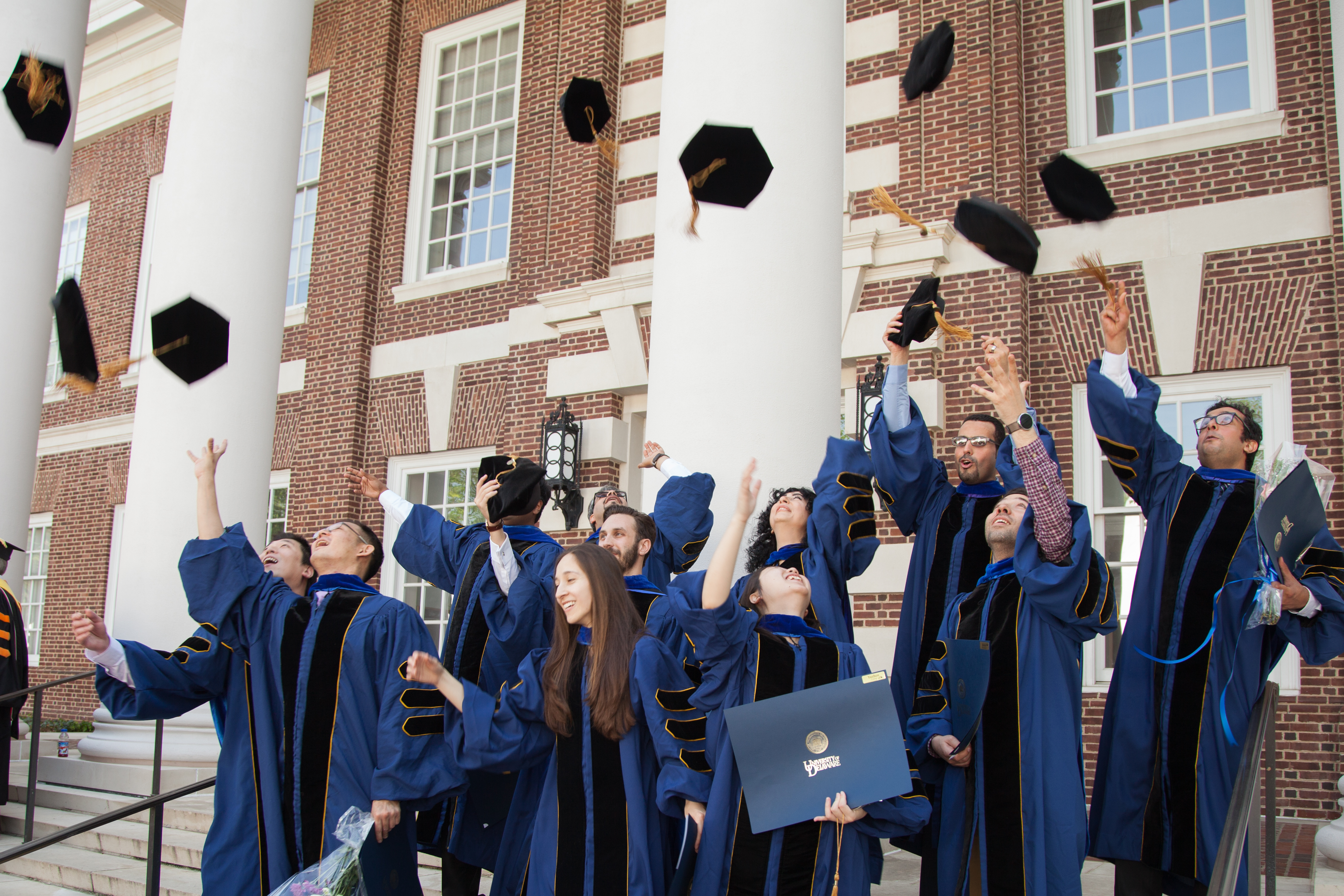


PT STAR
New classrooms and clinic enhance learning and clinical practice
11:33 a.m., April 23, 2014--The 72 students in the doctor of physical therapy (DPT) program at the University of Delaware know just how fortunate they are to be learning in the high-tech classrooms at the new Science, Technology and Advanced Research (STAR) Campus.
“Now, it feels like we have a building that lives up to the kind of program we are clinically and academically,” says second-year student Caitlin McGee.
Campus Stories
From graduates, faculty
Doctoral hooding
After starting their education in the old facilities in McKinly Lab on UD’s main campus, the students are awed by the capabilities in the Health Sciences Complex at STAR.
“The STAR classrooms are the definition of state of the art,” says John Iannelli, also a second-year student. “One of the biggest changes from McKinly, besides the vast array of new electronic equipment, was the purchase of enough ‘Hi-Lo’ tables like the ones in the clinic for every pair of students in class.”
“Throughout the program, we learn that body mechanics are very important for maintaining your health as a PT in an extremely physically demanding career,” he continues. “These tables allow us to incorporate proper body mechanics into practicing and implementing our skills, which was a facet of practice that we had to simulate in McKinly because the tables were fixed height. It takes learning in the classroom environment even closer to a real-life clinical scenario.”
The new facility, including the 10,000-square-foot clinic and the PT Flex Classroom, are enabling UD’s DPT program, ranked second in the nation, to expand beginning with this summer’s incoming class.
“We’ll be accepting 60 students this year, which is almost double the 36 per class that was our previous target,” says Ellen Wruble Hakim, director of the DPT program and associate professor. “The students love this space, and we have an even higher yield rate than we did in the past. We’re ramping up without sacrificing quality.”
The students love the space so much that they welcome the opportunity to come in after hours. “We have key fobs that let us into the building between certain hours every day so that we can practice and review even on the weekends,” says first-year student Ninia Agustin.
Eight wall monitors in the classroom enable projection of a variety of information, and advanced communication technology will soon allow students to observe sessions in the clinic and the new state-of-the-art anatomy lab from the classroom.
“This will allow students to ‘view’ an examination or intervention in progress without the patient having 120 eyes staring at him or her,” says Wruble. “Remote viewing also has tangential benefits in that it allows students to begin to explore some of the potential new directions in telemedicine.”
Cathy Ciolek, director of clinical education, finds it to be both “a joy and a challenge” to determine how best to use the technology to provide the best learning experience for students.
“We’re continuously adapting our teaching to fit with the capabilities we have now, which will make life better for everyone,” she says.
After just a few months at the STAR Campus, second-year student Eugene Khoroshan says he truly appreciates the time and care that was taken in making the two PT classrooms “wonderful learning environments.”
“The flexible lecture room is hooked up with the latest technology and mobile desk stations, allowing for interactive learning and convenient use of laptops and notebooks,” he says. “Our plinth lab is expansive, with over 32 individual therapeutic treatment tables, allowing for large group learning sessions as well as small break-away learning opportunities.”
But Iannelli would add one more item to the list of great things about the new STAR facilities, and it’s not high tech.
“It may sound silly, but the fact that we now have windows in the new clinic is a very nice change,” he says. “I think the windows present a more welcoming setting that deters people from feeling like PT is a chore. While it seems like a simple concept, patient compliance with PT is a huge part of achieving a successful outcome.”
Article by Diane Kukich
Photos by Kathy F. Atkinson










